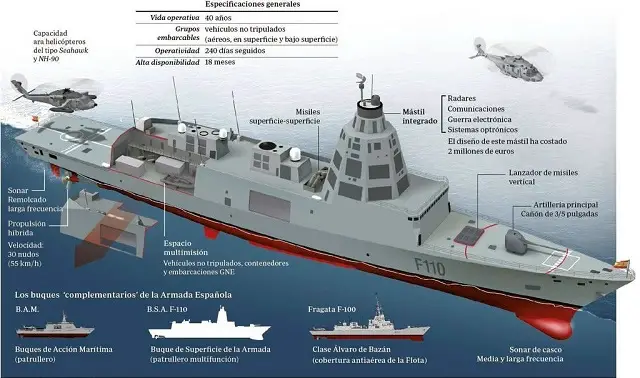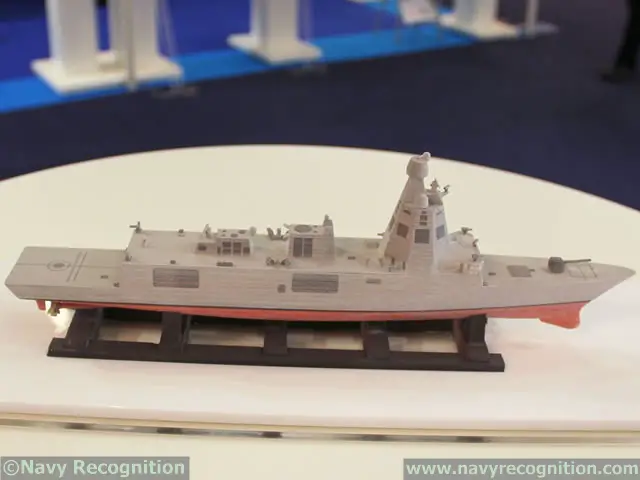Breaking news
Lockheed Martin & Indra Demonstrate Next Gen Radar for Future Spanish Navy F-110 Frigates.
| 2016
 Image source: Spanish Navy/Navantia |
|||
Officially
designated Buque de Superficie de la Armada (patrullero multifunction)
for Navy Surface Ship (multifunction patrol), the F-110 will be larger
than Spanish navy's BAM (Buque de Acción Marítima) OPV but
smaller than the F-100 Alavaro de Bazan class AEGIS Frigates. National shipbuilder Navantia along with the Spanish navy started F-110 concept studies and came up with an initial design of the ship following a feasibility study contract awarded last year. Detailed design-and-build contract is expected to be awarded in 2016 while delivery of the first vessel is set for 2022 for an operational life of 40 years. F-110 is designed to be operational 240 days in a row with a high availability of 18 months. As multifunction vessels, the F-110 will be fitted with 24x Mk 41 VLS cells for SM-2s and ESSM surface-to-air missiles, 8x anti-ship missiles, a 127mm main gun. Sensors will include the new integrated mast (combining fire control radar, main search radar, communication devices and EW sensors), a towed array and a hull sonar. A "multi mission space" will allow to transport and deploy unmanned vehicles (AUV, USV, UUV), containers and RHIBs. F-110 are expected to reach 30 knots thanks to a the hybrid propulsion system. |
|||






























